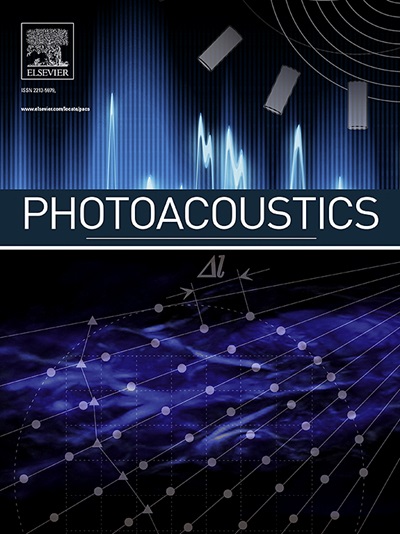Zero-Shot Artifact2Artifact: Self-incentive artifact removal for photoacoustic imaging
IF 7.1
1区 医学
Q1 ENGINEERING, BIOMEDICAL
引用次数: 0
Abstract
Three-dimensional (3D) photoacoustic imaging (PAI) with detector arrays has shown superior imaging capabilities in biomedical applications. However, the quality of 3D PAI is often degraded due to reconstruction artifacts caused by sparse detectors. Existing iterative or deep learning-based methods are either time-consuming or require large training datasets, limiting their practical application. Here, we propose Zero-Shot Artifact2Artifact (ZS-A2A), a zero-shot self-supervised artifact removal method based on a super-lightweight network, which leverages the fact that patterns of artifacts are more sensitive to sensor data loss. By randomly dropping acquired PA data, it spontaneously generates subset data to reconstruct images, which in turn stimulates the network to learn the artifact patterns in reconstruction results, thus enabling zero-shot artifact removal. This approach requires neither training data nor prior knowledge of the artifacts, making it suitable for artifact removal for arbitrary detector array configurations. We validated ZS-A2A in both simulation study and animal experiments. Results demonstrate that ZS-A2A achieves high performance compared to existing zero-shot methods.
零射伪影:光声成像的自激励伪影去除
具有探测器阵列的三维光声成像(PAI)在生物医学应用中显示出优越的成像能力。然而,由于稀疏检测器引起的重建伪影,三维PAI的质量经常下降。现有的迭代或基于深度学习的方法要么耗时,要么需要大量的训练数据集,限制了它们的实际应用。在这里,我们提出了Zero-Shot Artifact2Artifact (ZS-A2A),这是一种基于超轻量级网络的零射击自监督伪影去除方法,它利用了伪影模式对传感器数据丢失更敏感的事实。它通过随机丢弃采集到的PA数据,自发生成子集数据进行图像重构,进而刺激网络学习重构结果中的伪影模式,从而实现零射伪影去除。这种方法既不需要训练数据,也不需要工件的先验知识,这使得它适合于去除任意探测器阵列配置的工件。我们在模拟研究和活体动物实验中验证了ZS-A2A。结果表明,ZS-A2A与现有的零射击方法相比具有较高的性能。
本文章由计算机程序翻译,如有差异,请以英文原文为准。
求助全文
约1分钟内获得全文
求助全文
来源期刊

Photoacoustics
Physics and Astronomy-Atomic and Molecular Physics, and Optics
CiteScore
11.40
自引率
16.50%
发文量
96
审稿时长
53 days
期刊介绍:
The open access Photoacoustics journal (PACS) aims to publish original research and review contributions in the field of photoacoustics-optoacoustics-thermoacoustics. This field utilizes acoustical and ultrasonic phenomena excited by electromagnetic radiation for the detection, visualization, and characterization of various materials and biological tissues, including living organisms.
Recent advancements in laser technologies, ultrasound detection approaches, inverse theory, and fast reconstruction algorithms have greatly supported the rapid progress in this field. The unique contrast provided by molecular absorption in photoacoustic-optoacoustic-thermoacoustic methods has allowed for addressing unmet biological and medical needs such as pre-clinical research, clinical imaging of vasculature, tissue and disease physiology, drug efficacy, surgery guidance, and therapy monitoring.
Applications of this field encompass a wide range of medical imaging and sensing applications, including cancer, vascular diseases, brain neurophysiology, ophthalmology, and diabetes. Moreover, photoacoustics-optoacoustics-thermoacoustics is a multidisciplinary field, with contributions from chemistry and nanotechnology, where novel materials such as biodegradable nanoparticles, organic dyes, targeted agents, theranostic probes, and genetically expressed markers are being actively developed.
These advanced materials have significantly improved the signal-to-noise ratio and tissue contrast in photoacoustic methods.
 求助内容:
求助内容: 应助结果提醒方式:
应助结果提醒方式:


